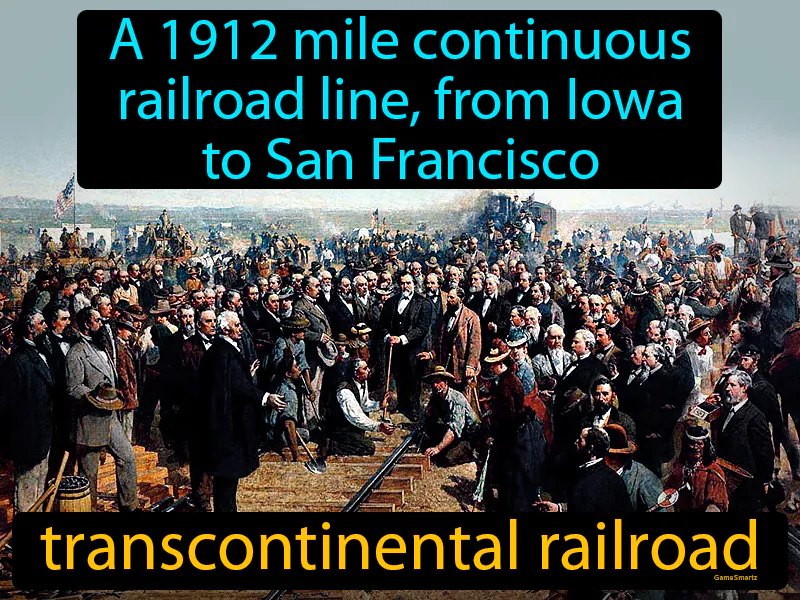Transcontinental Railroad
Transcontinental Railroad: Easy to understand
The transcontinental railroad was a major engineering project completed in 1869 that connected the eastern U.S. rail network at Council Bluffs, Iowa, with the Pacific coast at San Francisco. It was important because it allowed for faster and more efficient movement of goods and people across the country, helping to spur industrial growth and westward expansion. For people at the time, it represented progress, opportunity, and the unification of a nation previously divided by vast distances. Today, the values behind the railroad, like connectivity and innovation, are still important as they drive advancements in technology and infrastructure, such as high-speed internet and modern transportation systems. For example, just as the railroad connected distant cities, modern technology like the internet connects people globally, enabling communication and commerce across the world.

Practice Version

Transcontinental Railroad: A 1912 mile continuous railroad line, from Iowa to San Francisco. Transcontinental railroad. The transcontinental railroad was a train route across the United States that connected the east and west coasts, significantly boosting trade and travel.